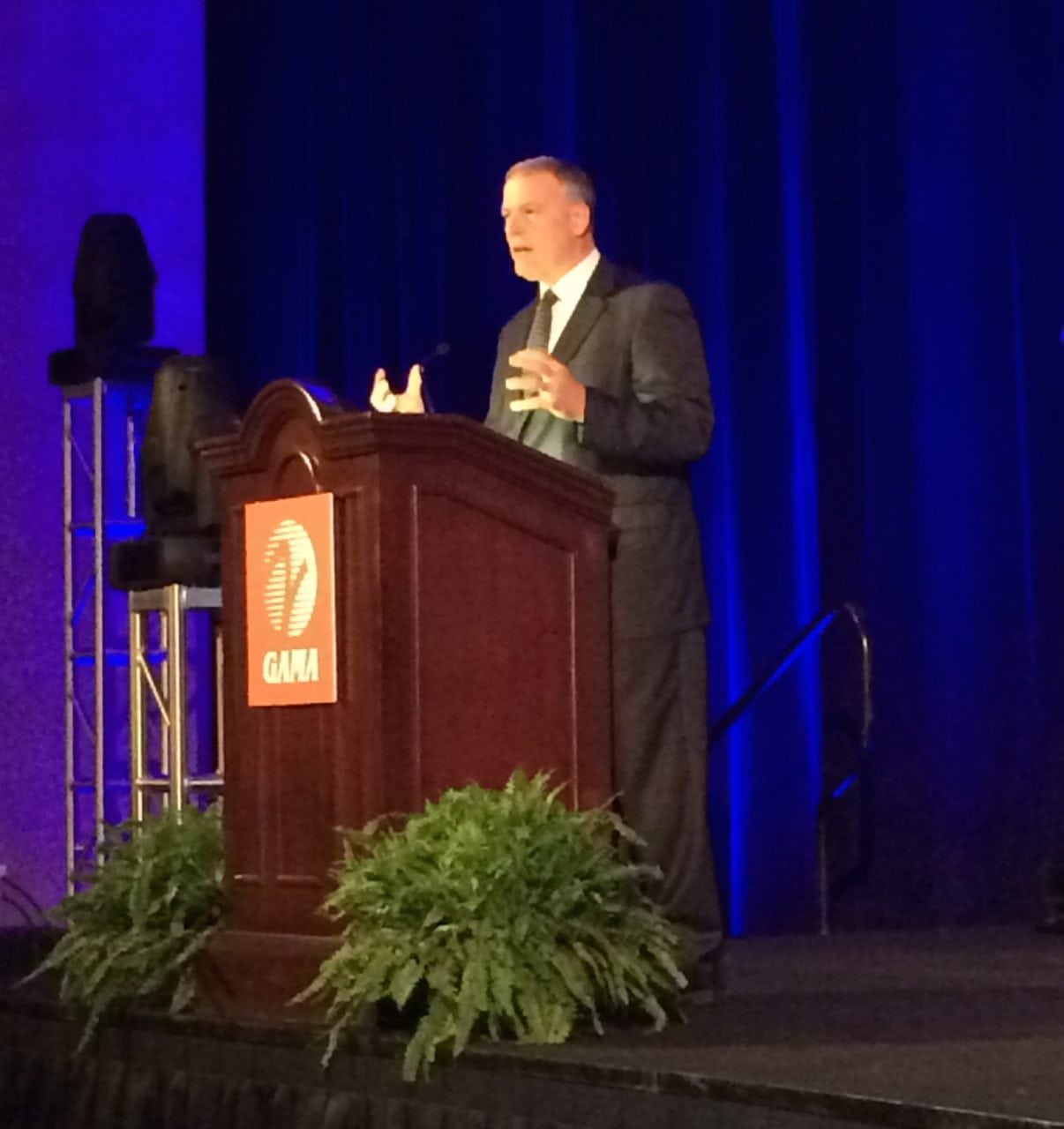 |
| The components to the combined ADS-B Out solution. Photo: Universal Avionics |
[Avionics Today 04-10-2015] Pete Bunce, president of the General Aviation Manufacturers Association (GAMA), opened the second day of the Aircraft Electronics Association (AEA) industry trade show in Dallas, Texas with a push for education in the face of nearing FAA reauthorization. AEA President Paula Derks also took to the podium as the two introduced optimistic economic impact reports for both the general aviation and avionics industries from their respective organizations.
“It was time again to do an economic impact study because we are dealing with an FAA reauthorization here, so we need to be able to tell our story,” Bunce said in his opening remarks, noting that the last study was conducted by GAMA in 2008.
The AEA report showed a 4 percent growth across the GA avionics industry in 2014, with more on the horizon as 78 percent of surveyed manufacturers have growth plans set out for 2015. Meanwhile, Bunce reported findings that the general aviation market is a $219 billion industry in the U.S. alone, contributing heavily to both jobs and the economy. Bunce and Derks believe that proving the economic vitality of the industry is essential as the FAA Reauthorization and Reform Act of 2012 is set to expire in September and the industry gears up for what may be a knock-down-drag-out fight on the way to a new bill.
“The [2012] funding bill was finally passed after 23 extensions and five years of negotiations and committee work back and forth,” said Derks. “It wasn’t for lack of us trying to get something passed. However, this year we’re coming much more prepared. Congress seems to be very willing to listen to what we want in that bill as it’s being processed.”
Even with the optimism surrounding the upcoming bill, both Derks and Bunce were adamant that the new reform act needs to include some regulatory changes to stimulate the growing GA industry for both pilots and manufacturers alike.
“What we, the AEA, want to see in the bill for our industry is certification reform: the streamlining of certification of avionics products that are being created. If we can streamline that and bring those products to market quicker, it results in huge cost savings for all of the manufacturers and it gets people using more efficient, safety-enhancing equipment on a quicker basis,” said Derks.
The AEA is also pushing for consistency of regulatory interpretation, citing that the various readings of the regulations from region to region challenge the stability of operating within the industry. Regulatory consistency may also help the industry move faster in a period where resources are slim.
“We are operating under a period of sequestration that is not going to go away. So that means less dollars for the FAA, less resources for them, and they have to find a better way of doing things,” said Bunce. “The [FAA] leadership has got to be able to go ahead and embrace reform to be able to keep Congress moving. When you really look at how long it takes us to get through the certification program, to get an [Standard Type Certificate] STC, we are burning money at a tremendous rate and we have to wait longer and longer for the regulators to get us through this process.”
Administrator Michael Huerta voiced concerns regarding the upcoming regulatory challenge at a hearing before Congress in March set to address the issue, throwing support behind many of the same ideals.
“FAA Reauthorization should secure appropriate funding for our nation’s airports. It should also enable the integration of new users into our airspace system and support the agency in fostering a culture of innovation and efficiency,” said Huerta. He called the upcoming reauthorization a joint effort between government and industry “to pull together to create the air traffic system that will carry this nation well into the 21st century.”
Outside of the FAA, the House Infrastructure and Committee has also been taking several steps to meet with members of industry, scheduling several private meetings in 2014 prior to beginning public hearings in November of last year. Still, with the five-year fight for the last bill still looming, and a slow FAA track record, many are less than optimistic that the GA industry can see an expedient reauthorization.
Bunce sees the cooperation from government going forward, but sights that the industry still needs to push for a more streamlined system in the next act alongside other reforms. The four points of reform he says GAMA will push for are: faster training and dispute resolution, a greater promotion of international engagement, the establishment of a small airplane revitalization act, and utilization of Original Designation Authorization (ODA) as it was laid out, which he says the FAA has not yet correctly implemented, thus wasting valuable time and resources.
“Congress has been very willing to listen to us and I think there is absolute universal acceptance republicans and democrats in both the house and senate that says that organizational designation authorization — ODA’s — are not working the way that the FAA promised us they would work,” said Bunce. “We’re going to turn the tables on that, we’re going to say ‘No, FAA, you have to tell us why you’re retaining what you’re retaining;’ and we have very strong support in Congress.”
By freeing up the FAA’s resources for manufacturers that already possess an ODA, the agency would have more time available to work with companies that do not. But Bunce believes that it’s up to those in the GA industry to inform their congressmen and lawmakers going forward on what’s best for the growth of the industry.
“When we look at what’s happening on the Hill now — when we look at how a bill becomes a law — the first and foremost part is that the professional staffs up on the Hill have to understand what they’re trying to accomplish,” said Bunce.